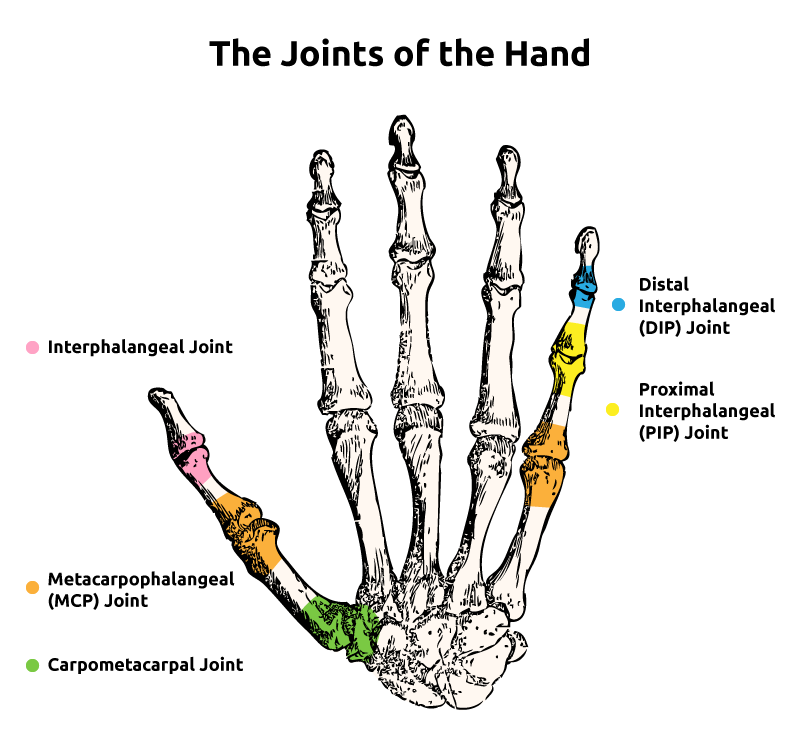| What Is Instability of the CMC Joint?21 August 2017 When suffering from instability of the CMC joint, movement of the thumb can quickly become uncomfortable, and in some cases the pain may even be unbearable. Not only will this hinder your ability to perform daily activities and enjoy hobbies, but it can also make you feel like you're completely at a loss. However, there are various approaches to treating instability of the CMC joint, and developing a greater understanding of the condition can help you determine the most suitable methods of relief from your own condition. Here at WristSupports.co.uk, We've compiled this concise guide to the causes and symptoms of CMC joint instability, as well as the possible approaches to pain relief and treatments to help you on your way to recovery. What is the CMC Joint?The hand and fingers are made up of different joints, with each one taking on a different responsibility to enable the hand to function efficiently. The carpometacarpal (CMC) joints are located in the wrist, and their primary function is to equip the carpal and metacarpal bones with articulated movement. The CMC thumb joint, or CMC-1 (also known as the trapeziometacarpal (TMC) joint as it connects the trapezium to the first metacarpal bone), is crucial for normal thumb motion and performance. If the CMC thumb joint becomes damaged or injured, regular dexterity may be hindered, or even impossible.
What Is Instability of the CMC Joint?The CMC joint is subject to developing numerous conditions, including osteoarthritis, dislocation, and instability. Instability of the CMC joint is characterised by a weakening of the thumb CMC joint dexterity as caused by ligament laxity or trauma to the ligaments stabilising the CMC joint. This instability can occur as a result of an injury surrounding the hand or wrist, or may manifest as a degenerative condition. In both cases, regular dexterity and the ability of the hand to effectively grip can become significantly reduced. Depending on the severity and advancement of the condition, different treatment options may be available. How Can I Treat Instability of the CMC Joint?Once you have received a professional medical diagnosis for your condition, the various approaches to surgical and nonsurgical treatments can be considered. As the dorsal ligaments are responsible for stabilising the TMC joint, it is important that methods of treatment are concentrated on repairing that area. Surgery and OperationIn more severe cases, surgical treatment may be required to fully restore the ligaments to their prior functionality. Following the operation, the thumb will require rest while healing; however, as the hand progresses through rehabilitation, normal pinching and grasping abilities will typically return. Wrist SupportsBoth for mild cases of CMC joint instability and for protecting the area during post-surgical rehabilitation, a wrist support will be the most tailored, cost-effective, and variable approach to protecting the thumb and wrist. It will be imperative to utilise a brace that offers targeted thumb support, such as the Air X Wrist and Thumb Brace, which offers joint support with a palmar bar and thumb support. Wrist braces such as the Bauerfeind Rhizoloc Thumb Support are specially designed to restrict mobility while encouraging a quickened rate of healing. Others, like the LP Stabilising Neoprene Wrist and Thumb Support, completely immobilise the CMC joint while leaving the fingers free for normal functioning. To view our full range of wrist supports for instability of the CMC joint, follow the button below. Do you have a question to ask or something to add? Why not leave us a comment below or find us on Facebook or Twitter. |
FREE UK DELIVERYon orders of £40 and over. EXPERT CUSTOMER SUPPORTRead our reviews. EASY PRODUCT RETURNSwith our 30 day returns policy. |


